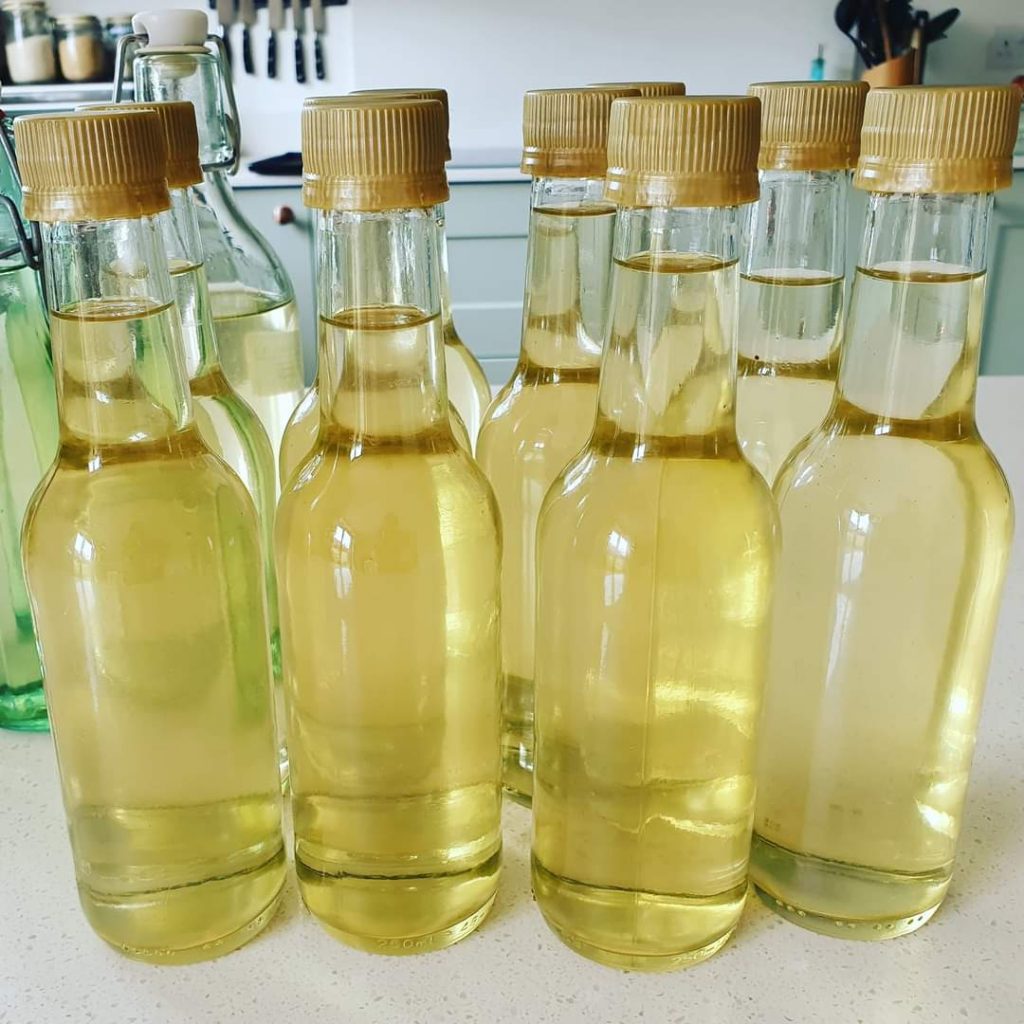Elderflower season occurs in May into June. You will see the large white fragrant fronds of little white flowers in the hedgerow. You may smell them before you see them!
Did you know each plant smells different? The smell gets more pungent as the day goes on. The best time to pick the flowers is after a few dry days when they are most fragrant. I like to pick them mid-morning while the fragrance is fresh and the morning dew evaporates.
Please do not go overboard picking the flowers, they will turn into berries which birds eat in the Autumn (these can be turned into elderberry syrup, which has many beneficial properties).
How do I make elderflower cordial?
You will need approximately 20 flower heads: steep them overnight in a large bowl covered with cooled boiled water for up to 2 days; add sliced lemon to enhance the flavour.
Strain the liquid into a jug. Note the volume and add the liquid to a large pan. For every litre of liquid, add 700-750g of sugar. You can add less sugar if you wish, but it will not keep as long.
Bring the mixture to a boil gently to dissolve the sugar. Once dissolved, pour the cordial into sterilised bottles or jars.
It can be kept in the fridge for several weeks, or add 50g of citric acid to preserve it for longer.
What can I use elderflower cordial for?
You can use it to flavour cakes, icing, jams, and jellies. It is also good with gin, vodka, a nice tonic, or used as a squash.
How do I make Elderflower champagne? (An old recipe from one of my allotment pals)
Add 500g of sugar to 2 pints of boiling water in a pan and stir until dissolved.
To the pan, add 5 pints of cooled boiled water, 4 tablespoons of apple cider vinegar, and 7 or 8 large elderflower heads.
Place a lid on the pan and let the mix steep for 48 hours. Strain the liquid through a muslin cloth into plastic bottles with screw lids.
Elderflowers contain natural yeast that reacts with sugar. Release the pressure by twisting the caps of the bottles every morning and night for 1 week before placing them in the fridge.
Release the pressure every few days for another week, then enjoy! It is essential to ‘burp’ the bottles so the pressure does not build up too high and cause them to explode. (I am very cautious and place the bottles in a plastic bag within the fridge just in case!)


Do you want to learn more about cordials and jams? The next few months are an excellent time for a private lesson or a group session with friends.
I use fresh organic fruit from my allotment in my lessons, which is not readily available in the shops. From tayberries and pink gooseberries to the freshest strawberries, I use fresh organic fruit from my allotment in my lessons.
Get in touch to discuss your cooking lesson requirements.
Great fun, these private workshops always book up early. Create your own festive bake-off with family or friends!
Our Get Cooking! Experience Gift Vouchers make a great present for all ages from 7 to 70, for birthdays, Christmas or just because! Vouchers are very popular with young adults about to leave home (and their parents!)
Whether you’re a complete beginner, want to brush up on basics, pick up new skills, or try out new dishes, Anne Marie can help you become a better cook.
Live Zoom cooking classes and demonstrations for any occassion. Available for individuals, family, friends and work colleagues.
6 Touchstone Road
Warwick Gates
CV34 6EE
T: 07956 955951
E: hello@get-cooking.co.uk
Send us your details to receive our newsletter:




Copyright ©2021 Get Cooking! | Privacy Policy | Terms and Conditions | Website Design by Your Site Matters